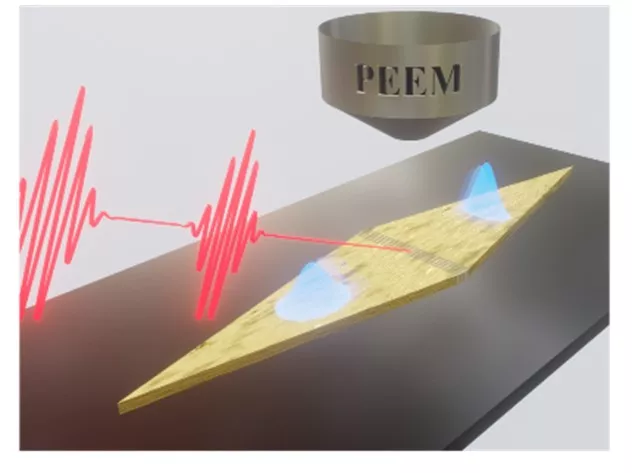Researchers from the Graz University of Technology (TU Graz), the HUN-REN Wigner Research Centre for Physics (HUN-REN Wigner RCP), and the ELI-ALPS Laser Research Institute (ELI-ALPS) have developed a new nanooptical device capable of transmitting ultrafast optical signals along nanometer-scale surface structures, paving the way for the development of faster and simultaneously miniaturised optoelectronic devices in the future. The paper introducing the results was published in Nano Letters, a leading international journal in nanoscience.
In today's world, more and more devices used in everyday life are equipped with microelectronic parts or some kind of microcomputer. However, the performance speed of these devices is constrained by the current technology. Therefore, researchers are looking for solutions that can increase the speed of the currently used electronic circuits. Using light for information transmission seems promising, as its electromagnetic field changes orders of magnitude faster than the switching speed of the fastest microelectronic switches. However, traditional photonic devices, such as optical fibers, are limited in terms of miniaturisation because the diffraction of light prevents the production of arbitrarily small photonic components.

Speed and size range of information transmission devices: plasmonic devices may combine speed and miniaturisation in the future.
In a joint effort by TU Graz, HUN-REN Wigner RPC, and ELI-ALPS, a waveguide operating on nanooptic principles has been developed, merging speed and the potential for miniaturisation. The fundamental operation of this innovation lies in the ability of a nanometric metal structure, to have its electrons oscillate at a rate matching the light's electromagnetic field when illuminated by ultra-short laser pulses. These oscillations then propagate along the metal's surface as a wave, akin to ripples spreading across a lake's surface. One of the major challenges, however, lies in the metal surface wavepackets maintaining the duration of the ultra-short laser pulses.
The Austrian and Hungarian researchers have now managed to design and create a metal structure that meets this expectation and on which the shortest plasmon wavepacket ever measured could be demonstrated. Péter Dombi, who leads the Ultrafast Nanooptics Momentum Research Group operating within HUN-REN Wigner RCP and is the Hungarian lead of this project, stated: "This is a significant advancement in the development of ultrafast nanooptic circuit elements, as the signal propagating on the metal surface retained a temporal length of under 10 femtoseconds, enabling switching speeds around 0.1 Petahertz. Thanks to the principle of plasmonics, the transmitted optical signal can also be concentrated into nanometer size ranges."

A plasmon wavepacket can be launched on the surface metal structure with an ultra-short laser pulse, whose temporal length can be examined with a second laser pulse and a photoelectron emission microscope.
Another intriguing aspect of the research is that both Péter Dombi and Martin Schultze, who heads the partner Austrian research team, were supervised in their early careers by Ferenc Krausz, Nobel laureate in Physics in 2023.